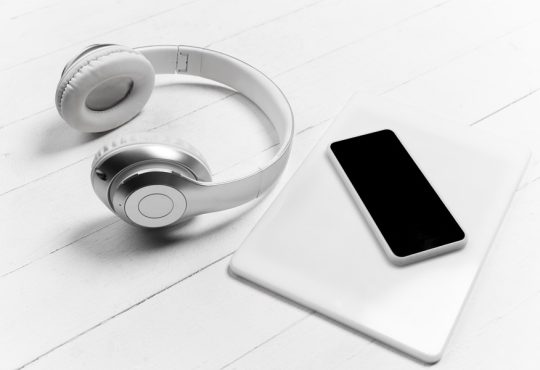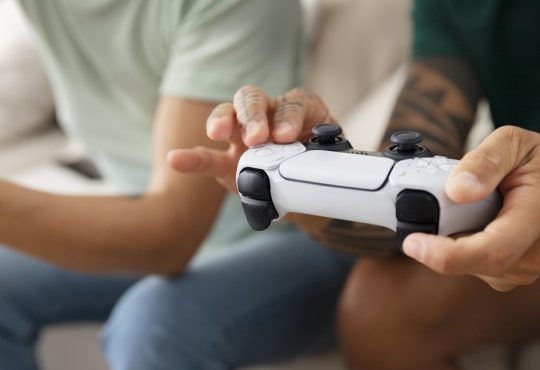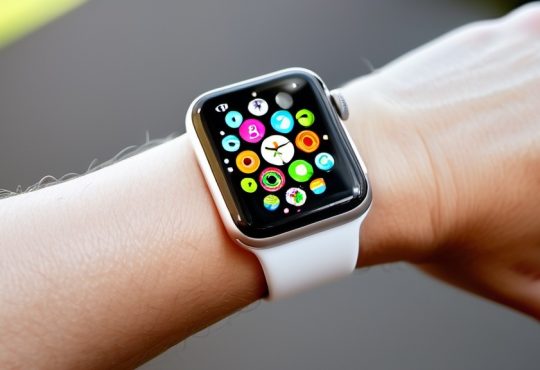Choosing the right camera can be a daunting task, whether you’re an aspiring photographer, vlogger, or both. With so many options available, each with a variety of features and capabilities, narrowing down the perfect camera for your needs requires careful consideration. To make an informed decision, you should break down your needs, understand the types of cameras available, and know what technical features to prioritize. Below is a detailed guide to help you pick the best camera based on your requirements.
Identify Your Needs
The first step in choosing the ideal camera is to clearly define your needs. Are you focused more on photography, and vlogging, or do you need a camera that performs well in both areas? The needs of each are quite different. Photography places more emphasis on still image quality, manual settings, and the ability to capture various subjects in different lighting conditions. On the other hand, vlogging demands features like high-quality video, ease of use, and good portability. For instance, a photographer may want a camera that offers a wide range of manual controls and excellent still-image performance. In contrast, a vlogger might prioritize video resolution, the ability to attach external microphones, and a camera with a flip-out screen for self-recording.
Another consideration is the environment in which you will be shooting. For example, if you are primarily vlogging while traveling or shooting in outdoor locations, you’ll need a camera that is lightweight, durable, and capable of capturing smooth video footage. In contrast, a photographer who primarily shoots portraits or landscapes might prioritize a camera with a larger sensor and advanced manual controls. Defining whether your focus is on photography, vlogging, or both will help you determine which features matter most.
Camera Types
Once you’ve identified your needs, it’s time to choose the type of camera that fits your goals. Several main types of cameras cater to different types of users, and it’s essential to understand how they work and what they offer.
Digital Single-Lens Reflex (DSLR) cameras are traditionally preferred by professional photographers because they offer excellent image quality, manual controls, and a wide selection of interchangeable lenses. DSLRs allow for greater creative control over settings like aperture, shutter speed, and ISO. However, DSLRs are often bulkier than other camera types, which may make them less convenient for vlogging, particularly for on-the-go filming.
Mirrorless cameras have gained popularity in recent years due to their compact design and image quality that rivals DSLRs. These cameras use electronic viewfinders instead of the optical viewfinders found in DSLRs, resulting in a lighter, more compact design. Mirrorless cameras are particularly good for both photography and vlogging, offering great video features such as 4K resolution, fast autofocus, and interchangeable lenses.
For users who prefer something more user-friendly and portable, point-and-shoot cameras are a great option. These cameras are compact, easy to use, and designed for casual photographers or vloggers who don’t want to worry about manual controls. While they generally have fewer features than DSLRs or mirrorless cameras, many point-and-shoot models offer good image quality and solid video performance. They’re ideal for vlogging on the go due to their size and convenience.
If you’re into action sports or adventure content, action cameras like GoPros are another type to consider. They are small, durable, and often waterproof, making them perfect for filming extreme sports or outdoor activities. Although action cameras aren’t typically used for traditional photography, they excel in capturing dynamic video footage.
Sensor Size
The size of a camera’s sensor is one of the most important factors in determining image quality, particularly when it comes to low-light performance and depth of field. Larger sensors allow more light into the camera, resulting in higher-quality images, especially in challenging lighting conditions.
Full-frame sensors are the largest commonly available sensor sizes and are equivalent to the size of 35mm film. Cameras with full-frame sensors deliver exceptional image quality, superior low-light performance, and the ability to achieve a shallower depth of field, making them perfect for portrait photography and creating cinematic-looking videos. However, full-frame cameras tend to be more expensive and larger, making them less portable.
For those who want high-quality images without the bulk and cost of a full-frame camera, APS-C sensors offer a great balance. These sensors are slightly smaller than full-frame, but they still deliver excellent image quality. APS-C sensors are commonly found in both mirrorless and DSLR cameras, making them a popular choice for hobbyists and semi-professional photographers. They also perform well in video recording, making them suitable for vlogging.
Another option to consider is the micro four-thirds sensor, which is smaller than both full-frame and APS-C sensors. While micro four-thirds cameras don’t perform as well in low light compared to their larger-sensor counterparts, they offer good image quality in well-lit conditions and are known for their compact and portable designs. This sensor size is a popular choice among vloggers who need lightweight cameras that can handle both still photography and video recording.
Lens Compatibility
For photographers and vloggers who want flexibility in their shooting style, a camera with interchangeable lenses is a significant advantage. Different lenses allow you to capture a variety of scenes and subjects with more precision and creativity. For example, a wide-angle lens can help you capture sweeping landscapes, while a telephoto lens allows you to zoom in on distant subjects. For portrait photography, a fast prime lens can create a beautiful background blur (bokeh) effect, making your subject stand out.
Cameras like DSLRs and mirrorless systems offer the ability to change lenses, providing greater versatility in terms of creative control. This feature is especially important for photographers who may want to experiment with different shooting styles or lighting conditions.
For vloggers, having a camera with interchangeable lenses also opens up creative possibilities. A wide-angle lens is particularly useful for shooting in small spaces or for capturing more of the background, while a lens with a fast aperture can create cinematic-looking videos with a blurred background.
Point-and-shoot cameras and action cameras typically come with fixed lenses, meaning you cannot change the lens. However, many of these cameras offer zoom lenses that provide some level of versatility in framing shots.
Autofocus and Stabilization
Autofocus is a crucial feature for both photographers and vloggers, especially when capturing moving subjects or recording yourself. Reliable autofocus ensures that your subject remains in sharp focus, which is particularly important for vloggers who often film themselves while moving or changing angles.
When choosing a camera, look for one with a fast and accurate autofocus system. Many mirrorless cameras now offer advanced autofocus technology, including eye-tracking or face-detection features, which can be particularly helpful for vlogging.
Stabilization is another critical feature, especially for vlogging or handheld photography. Without good stabilization, a camera shake can lead to blurry images or jittery video footage. Some cameras offer built-in stabilization, either optical or electronic, which helps smooth out the motion and ensures that your footage looks polished even when shooting handheld. This feature is particularly useful for vloggers who are filming while walking or moving.
Portability and Weight
If you plan to vlog frequently or take your camera on trips, portability becomes a key factor. Carrying a bulky, heavy camera around for extended periods can be exhausting, and it may not be practical for vlogging in dynamic environments.
Compact and lightweight cameras, like mirrorless or point-and-shoot models, are ideal for vloggers who want to move around freely while filming. Even some DSLR models are designed with portability in mind, but they may still feel cumbersome compared to more compact options.
Photographers who need a camera for travel or outdoor shooting will also benefit from lighter cameras. While full-frame DSLRs offer exceptional image quality, their size and weight can make them challenging to carry for long periods.
Connectivity and External Ports
For vloggers, especially those who create content for YouTube or social media, having a camera with good connectivity features is essential. Cameras with built-in Wi-Fi or Bluetooth allow you to quickly transfer photos or videos to your smartphone or laptop for editing and sharing on the go. This feature is particularly useful when you need to upload content quickly.
Another important consideration for vloggers is whether the camera has an external microphone port. Sound quality is just as crucial as video quality, and built-in microphones on most cameras may not capture audio with the clarity needed for professional-quality content. By using an external microphone, you can drastically improve the audio in your videos, providing a better experience for your viewers.
Battery Life
Battery life is a practical but essential factor to consider, especially if you plan to use your camera for long recording sessions or extended photography shoots. Vloggers, in particular, need cameras with long battery life, as running out of power during filming can be frustrating.
Mirrorless cameras tend to have shorter battery life compared to DSLRs, but many models allow for USB charging, making it easier to recharge the battery on the go. You can also invest in extra batteries or portable charging solutions to ensure that your camera is always ready for use.
Budget and Future-Proofing
Finally, budget plays a crucial role in deciding which camera to choose. Set a realistic budget based on your needs, and be prepared to make some trade-offs. High-end cameras with full-frame sensors, 4K video, and advanced features may offer better performance, but they also come at a premium price. However, if you’re serious about photography or vlogging, investing in a high-quality camera can save you from needing an upgrade down the line.
It’s also essential to think about future-proofing your purchase. Choosing a camera with a good selection of lenses, accessories, and software support can ensure that your investment remains valuable as your skills and content creation needs evolve. If you plan to take photography or vlogging more seriously in the future, consider a camera that offers room for growth.
In conclusion, finding the perfect camera for photography or vlogging requires thoughtful consideration of your needs, shooting style, and the type of content you want





